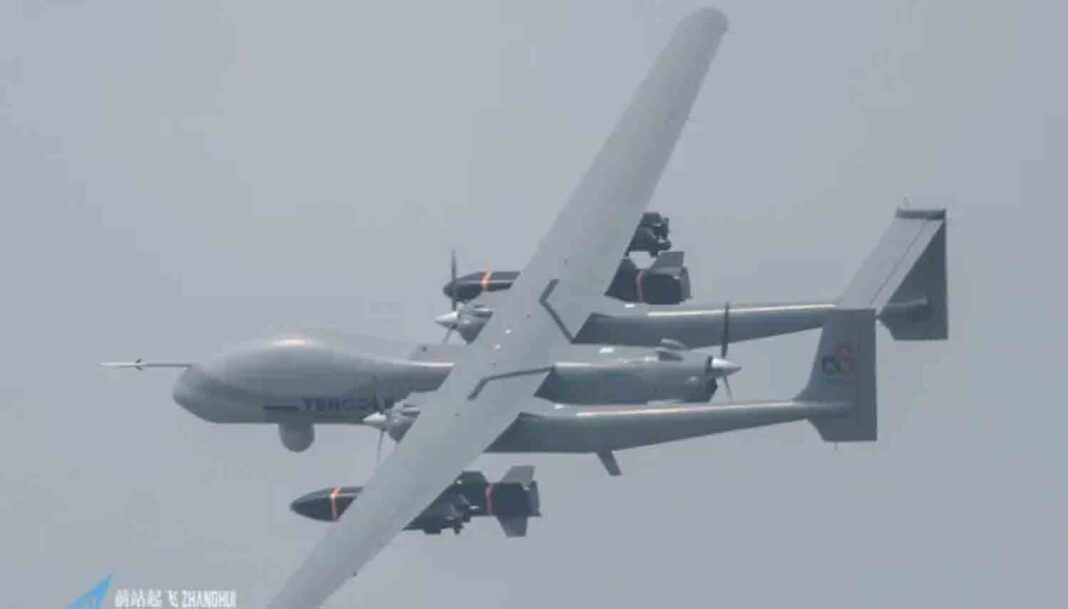Russia has ramped up efforts to secure India as a purchaser of its advanced fifth-generation fighter jet, the Sukhoi Su-57 “Felon.” To gain an edge over competitors, Moscow is not only proposing joint production but also an exceptional transfer of advanced technology, along with the establishment of a domestic fifth-generation fighter manufacturing industry in India.
Denis Alipov, Russia’s Ambassador to India, emphasized the importance of this initiative, describing it as a “highly lucrative deal” that could significantly enhance India’s air combat capabilities for many years.
“We are presenting our own fifth-generation fighter. The Su-57 is the best aircraft available. We showcased it at Aero India last month in Bangalore, where it garnered significant attention,” Alipov stated. “It is highly competitive; we are not just selling but also offering co-production. We provide technology sharing and are prepared to establish the necessary industrial facilities for its production. We are open to modifications as well.”
“This is a very lucrative deal that we are extending to India,” he added.
The United States and Russia are engaged in a fierce competition for influence, each striving to win India’s support in what could be one of the most significant fighter jet agreements of the decade.
At the center of this intense rivalry are two of the globe’s most sophisticated warplanes—the American F-35 and the Russian Su-57—both of which promise to transform the future of India’s air power. In a notable development, Russia has formally proposed its Su-57E fighter jet as a candidate for the Indian Air Force, coinciding with U.S. President Donald Trump’s personal promotion of the F-35 to India during Prime Minister Narendra Modi’s prominent visit to Washington.
Alipov emphasized the attractive nature of Moscow’s proposal shortly after Rosoboronexport, Russia’s state arms export agency, announced that India could expedite the licensed production of the Su-57 by enhancing its current Su-30MKI production line.
India has already manufactured at least 222 units of the Su-30MKI, a powerful “4+ generation” fighter jet, and Russia is now capitalizing on this established infrastructure to facilitate India’s entry into the exclusive group of fifth-generation fighter operators.
On March 7, the Russian state-owned news agency TASS reported that Rosoboronexport expressed its willingness to leverage India’s well-developed Su-30MKI production capabilities for the local assembly of the Su-57E.
Rosoboronexport further indicated that if India proceeds with the agreement, its aerospace sector—already adept at assembling Russian Su-30MKI fighter jets—could swiftly commence production of the Su-57E, marking the beginning of a new chapter in indigenous fifth-generation fighter jet manufacturing.
“Should the Indian side make a favorable decision, the production of the Russian fifth-generation Su-57E fighter jet can commence promptly at the same facilities currently engaged in the production of the Su-30MKI,” stated Rosoboronexport.
Rosoboronexport has reaffirmed its dedication to enhancing India’s air combat capabilities, offering comprehensive support for an extensive upgrade program aimed at transforming the Indian Air Force’s Su-30MKI fleet.
This initiative goes beyond standard modernization, promising to integrate advanced capabilities into India’s fighter jets while actively engaging the nation’s defense industry in a strategic partnership that could reshape its aerospace landscape.
The agency indicated that the combat capabilities of the Su-30MKI could be significantly improved through the incorporation of new air-launched munitions and upgrades to its avionics. Ongoing discussions are focused on the potential continuation of Su-30MKI production in India, with expectations for favorable outcomes in the near future.
India finds itself at a pivotal moment, facing the concerning prospect of being among the last nuclear-armed nations to operate a fifth-generation fighter aircraft. As the global air combat environment shifts, major powers have already taken decisive actions—the United States, the United Kingdom, and NATO’s nuclear-sharing partners have secured the advanced F-35, while Pakistan is set to introduce China’s J-35A by 2029, potentially alongside Türkiye’s ambitious KAAN fighter.
Additionally, North Korea has expressed its intention to acquire the formidable Su-57. This situation leaves India and France as the only nuclear-armed countries yet to establish a clear strategy for achieving fifth-generation air superiority, a gap that could have significant ramifications for their strategic positions.
In response to this urgency, Russia has significantly increased its production of the Su-57, with annual output rising from six aircraft in 2022 to twelve in 2023, and projections indicating it could reach twenty by 2024. For India, the acquisition of these advanced jets in substantial numbers could be transformative.
The Su-57’s sophisticated network-centric warfare capabilities would enhance frontline combat units and serve as a force multiplier, integrating seamlessly with MiG-29UPG and Su-30MKI fighters, S-400 air defense systems, and other strategic assets. The critical question now is whether India will capitalize on this opportunity to advance or risk lagging behind in the forthcoming era of aerial combat.
Discover more from Defence Talks | Defense News Hub, Military Updates, Security Insights
Subscribe to get the latest posts sent to your email.





